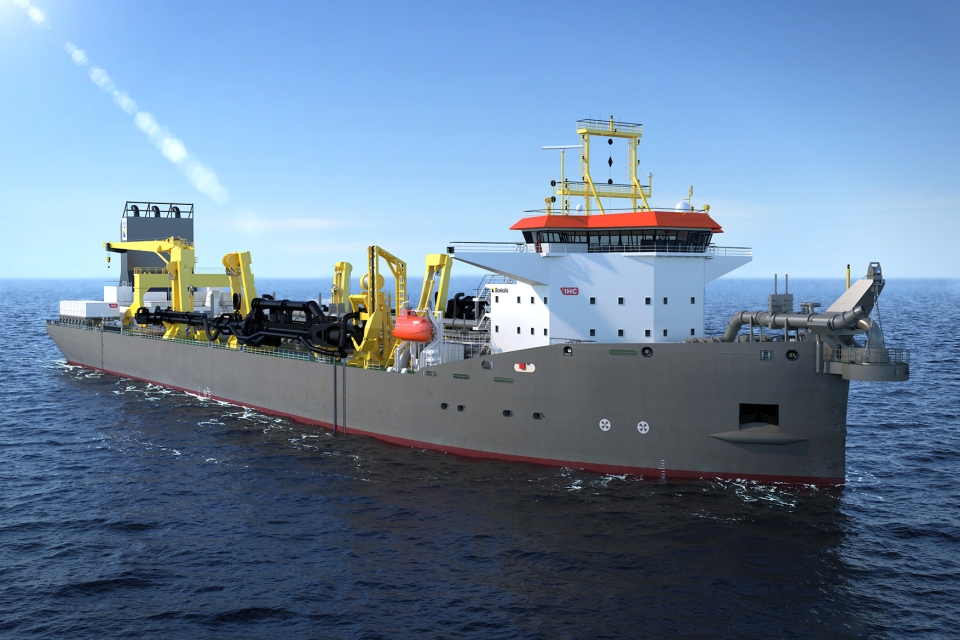Construction of Boskalis’ new 31,000 m3 trailing suction hopper dredger kicked off with the steel cutting at the Royal IHC yard last week. The vessel will be built in Krimpen aan den IJssel, the Netherlands, over the next few years.
The new vessel will be one of the largest trailing suction hopper dredgers in the Boskalis fleet. Noteworthy features of the energy-efficient vessel design include the full diesel-electric installation and propulsion via Azipods. These technological innovations, combined with the optimised underwater hull design and an advanced automation system, will contribute to a significantly lower fuel consumption.
It is a significant order for Royal IHC, as it needed to land large custom shipbuilding orders for its survival. During a restructuring round in October 2022, the shipbuilder’s yard in Krimpen aan den IJssel was temporarily closed down, but the Boskalis order has allowed it to reopen.
Also read: Boskalis and IHC ink deal for 31,000 m3 dredger
Methanol and selective catalytic reduction
The vessel is also being prepared for the use of (green) methanol as an alternative fuel. The methanol plant and storage tanks on board make this switch possible. Furthermore, the dual fuel main engines are equipped with two-stage turbos and can be powered by both conventional fuels and more sustainable alternatives such as biodiesel and methanol, providing for a substantial reduction of CO2 emissions.
Boskalis ordered the methanol-ready engines for the vessel last week at MAN Energy Solutions. It was then revealed that each engine will also feature an exhaust-gas after-treatment system, the MAN Low-Pressure Selective Catalytic Reduction (LP-SCR) system, that ensures IMO Tier III compliance.
Also read: MAN to power Boskalis’ new dredger
Powerful and sustainable
With a double suction pipe equipped with underwater pumps and two discharge pumps with a combined discharge capacity of 15,000 kW, the new trailing suction hopper dredger is well suited to dredging material and discharge this over long distances to a reclamation site. This powerful performance also contributes to increased efficiency of the dredging process.
The new vessel is expected to enter service in mid-2026. Thanks to its advanced design and state-of-the-art technology, this vessel marks a significant step in making Boskalis’ dredging fleet more sustainable.
Picture by Boskalis.
Also read: Another net loss for Royal IHC, but upturn seems to be afoot








